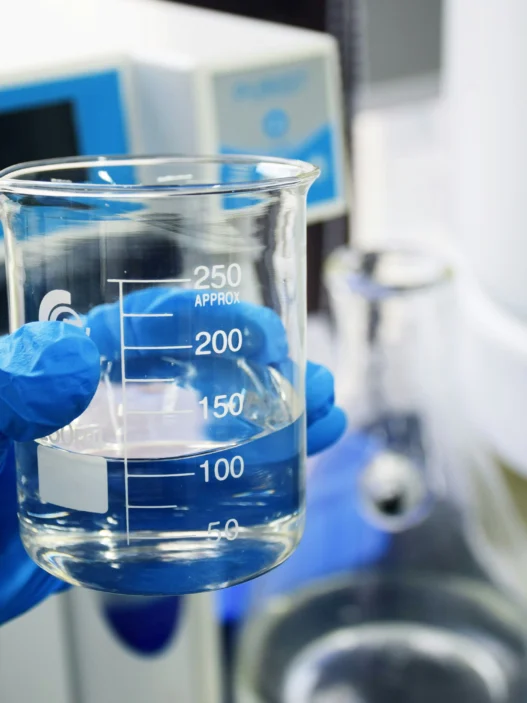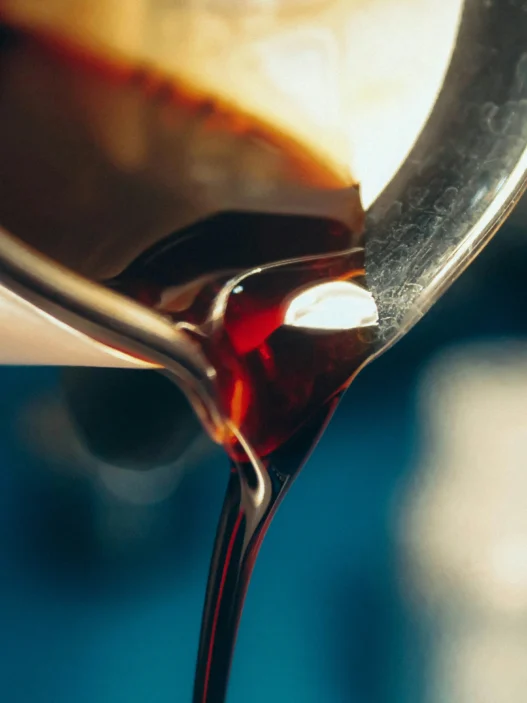2-Bromonaphthalene is a chemical compound that is commonly used in the manufacturing of pharmaceuticals, dyes, and insecticides. While the average individual may not interact with this specific compound directly in their daily life, its applications are essential in various industries that contribute to the advancement of modern society. For example, 2-Bromonaphthalene plays a crucial role in the development of medications that treat a wide range of illnesses and conditions, highlighting its significance in healthcare. Additionally, its use in the production of dyes adds color to textiles and consumer goods, while its presence in insecticides helps control pests that can threaten agricultural crops. Overall, the relevance of 2-Bromonaphthalene lies in its contributions to multiple sectors that impact everyday life, albeit indirectly for most individuals.
Table of Contents:
- 💡 Commercial Applications
- ⚗️ Chemical & Physical Properties
- 🏭 Production & Procurement
- ⚠️ Safety Considerations
- 🔬 Potential Research Directions
- 🧪 Related Compounds
💡 Commercial Applications
2-Bromonaphthalene, a chemical compound derived from naphthalene, finds various commercial and industrial applications due to its unique properties. It is commonly used as a precursor in the manufacturing of pharmaceuticals, dyes, and other organic compounds. Additionally, 2-Bromonaphthalene is utilized in the production of insecticides and agricultural chemicals, making it an essential compound in the agricultural industry.
In the pharmaceutical industry, 2-Bromonaphthalene plays a crucial role in the synthesis of various drugs and medications. It is used as a building block in the creation of anti-inflammatory drugs, antihistamines, and other pharmaceutical products. Its chemical structure allows for the modification of specific functional groups, enabling the development of new drug compounds with enhanced therapeutic properties.
Furthermore, 2-Bromonaphthalene is utilized in medicinal chemistry research for the creation of novel drug candidates. By introducing specific substituents to the bromine atom, scientists can modify the compound’s pharmacological activity and optimize its efficacy. This versatility makes 2-Bromonaphthalene a valuable asset in the discovery and development of new medications for various medical conditions.
⚗️ Chemical & Physical Properties
2-Bromonaphthalene is a white crystalline solid with a distinct, aromatic odor. It is sparingly soluble in water but soluble in organic solvents.
The molar mass of 2-Bromonaphthalene is 207.13 g/mol, and it has a density of 1.505 g/cm3. Compared to common food items like sugar (molar mass 342.3 g/mol, density 1.59 g/cm3) and salt (molar mass 58.44 g/mol, density 2.16 g/cm3), 2-Bromonaphthalene has lower molar mass and density.
The melting point of 2-Bromonaphthalene is 31-32°C, and its boiling point is 295-297°C. Comparatively, common food items like butter (melting point 32-35°C, boiling point 150-300°C) and olive oil (melting point -6°C, boiling point 300°C) have melting and boiling points within different ranges.
2-Bromonaphthalene is slightly soluble in water and has a low viscosity. In comparison, common food items like vinegar (soluble in water, low viscosity) and honey (insoluble in water, high viscosity) exhibit varying solubilities and viscosities in comparison.
🏭 Production & Procurement
2-Bromonaphthalene is typically produced through the bromination of naphthalene. This process involves the reaction of naphthalene with bromine in the presence of a catalyst, such as iron or aluminum chloride. The resulting 2-Bromonaphthalene is then separated from the reaction mixture through various extraction and purification techniques.
Procurement of 2-Bromonaphthalene can be achieved through chemical suppliers or manufacturers that specialize in the production of aromatic compounds. The compound is typically available in a liquid form and can be stored and transported in suitable containers to prevent leakage or contamination. Specialized chemical transport companies may be used to ensure the safe delivery of 2-Bromonaphthalene to its intended destination.
Transportation of 2-Bromonaphthalene should adhere to strict regulations and guidelines to ensure the safety of handlers and the environment. Proper labeling, packaging, and handling procedures should be followed to prevent accidents or spills during transportation. Additionally, appropriate safety equipment and training should be provided to personnel involved in the handling and transportation of 2-Bromonaphthalene to minimize risks and ensure compliance with regulatory requirements.
⚠️ Safety Considerations
Safety considerations for 2-Bromonaphthalene must be taken seriously due to its hazardous nature. This chemical is flammable and may react violently with oxidizing agents. It can cause skin and eye irritation upon contact, and inhalation may lead to respiratory irritation. Proper ventilation and personal protective equipment must be used when handling 2-Bromonaphthalene to minimize the risk of exposure.
Hazard statements for 2-Bromonaphthalene include “Causes skin irritation,” “Causes serious eye irritation,” and “May cause respiratory irritation.” These statements highlight the potential dangers associated with this chemical and emphasize the importance of proper handling procedures and protective measures. Individuals working with 2-Bromonaphthalene should be aware of these hazards and take appropriate precautions to reduce their risk of exposure.
Precautionary statements for 2-Bromonaphthalene include “Wear protective gloves/protective clothing/eye protection/face protection,” “Avoid breathing dust/fume/gas/mist/vapors/spray,” and “Use explosion-proof electrical/ventilating/lighting/equipment.” These statements provide guidelines for safely handling 2-Bromonaphthalene and stress the importance of using personal protective equipment, maintaining proper ventilation, and preventing ignition sources to minimize the risk of accidents and exposure to this hazardous chemical.
🔬 Potential Research Directions
Potential research directions for 2-Bromonaphthalene lie in its use as a building block for organic synthesis. Studies could explore its reactivity in various reactions and its potential applications in the development of new pharmaceuticals and agrochemicals. Additionally, investigation into the environmental impact of 2-Bromonaphthalene could contribute to our understanding of its persistence in the environment.
Further research could focus on the development of new methods for the synthesis of 2-Bromonaphthalene, with an emphasis on improving efficiency and sustainability. Studies could also investigate the potential toxicity and biological activity of 2-Bromonaphthalene, providing valuable information for risk assessment and regulatory purposes. Furthermore, exploration of the potential use of 2-Bromonaphthalene as a precursor in the synthesis of novel materials could expand its applications in various industries.
Exploration of the physical and chemical properties of 2-Bromonaphthalene could provide insights into its behavior under different conditions, leading to a deeper understanding of its reactivity and potential applications. Research on the stereochemistry of 2-Bromonaphthalene and its derivatives could shed light on their biological activity and potential use in drug design. Overall, further investigation into 2-Bromonaphthalene could lead to new discoveries and applications in the fields of chemistry, materials science, and biology.
🧪 Related Compounds
One similar compound to 2-Bromonaphthalene based upon molecular structure is 1-Bromonaphthalene. This compound is structurally very similar to 2-Bromonaphthalene, with the bromine substituent located at the 1-position on the naphthalene ring instead of the 2-position. This slight difference in substitution can have significant effects on the compound’s chemical reactivity and physical properties.
Another similar compound to 2-Bromonaphthalene is Naphthalene. Although naphthalene is not a brominated compound like 2-Bromonaphthalene, it shares the same basic naphthalene ring structure. Naphthalene is a polycyclic aromatic hydrocarbon with two fused benzene rings, making it a structural isomer of both 1-Bromonaphthalene and 2-Bromonaphthalene.
A third similar compound to 2-Bromonaphthalene based upon molecular structure is 2-Chloronaphthalene. This compound is structurally analogous to 2-Bromonaphthalene, with a chlorine substituent instead of a bromine substituent at the 2-position on the naphthalene ring. Like 2-Bromonaphthalene, 2-Chloronaphthalene is used in various chemical reactions and organic synthesis processes due to its unique reactivity and properties.




